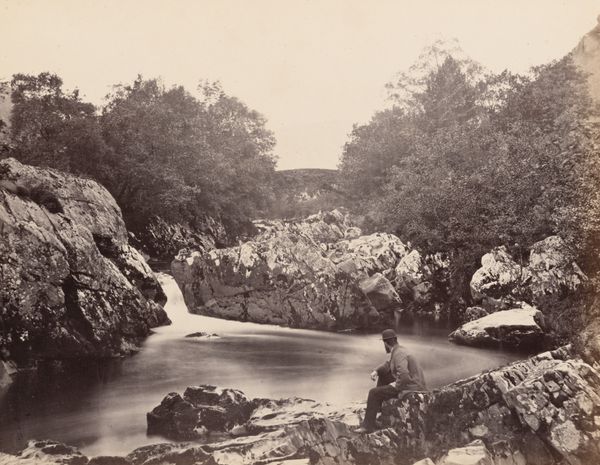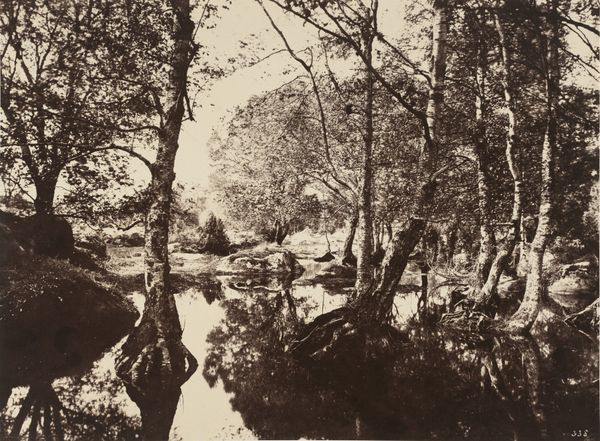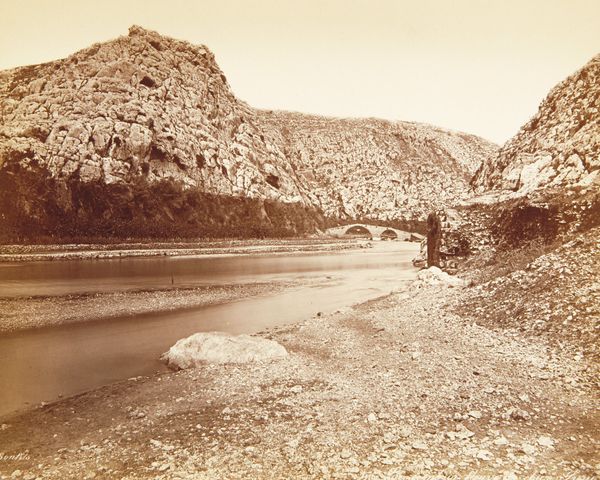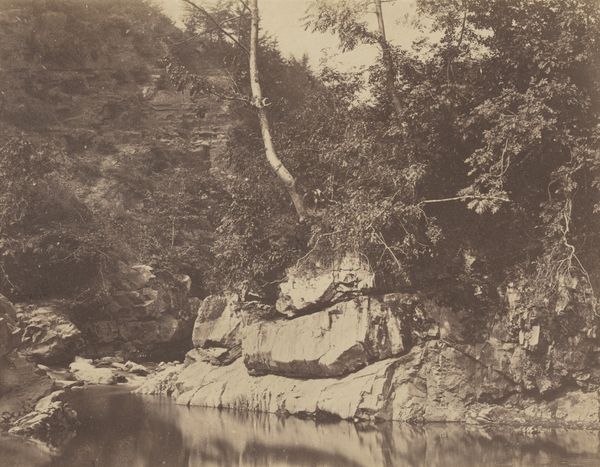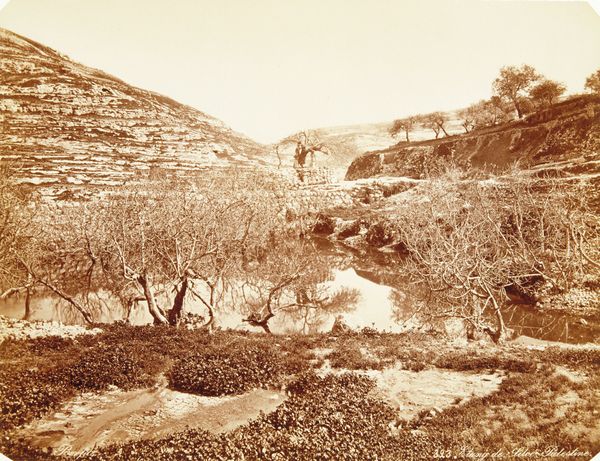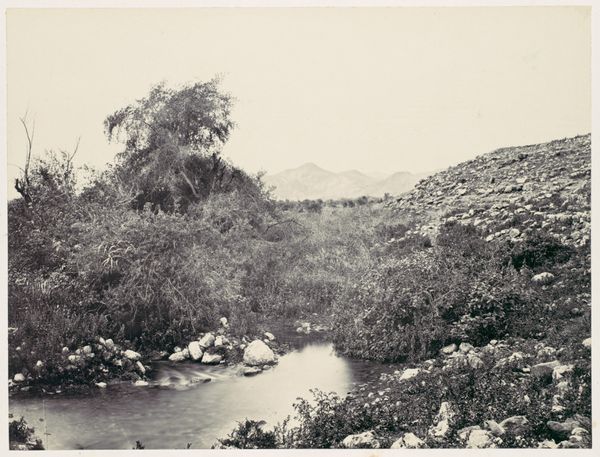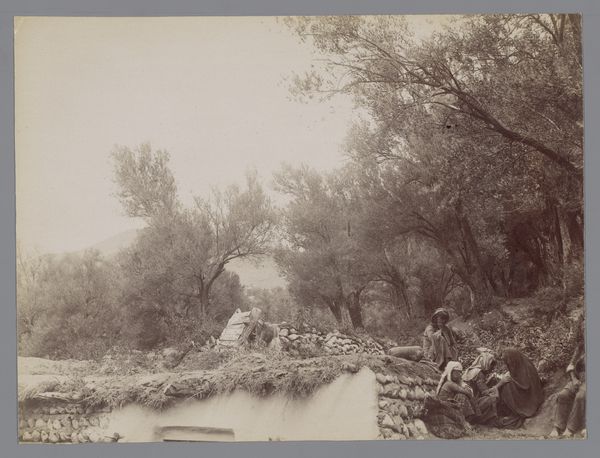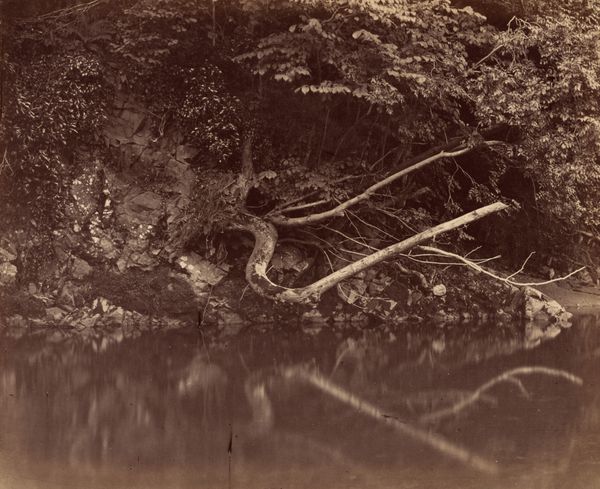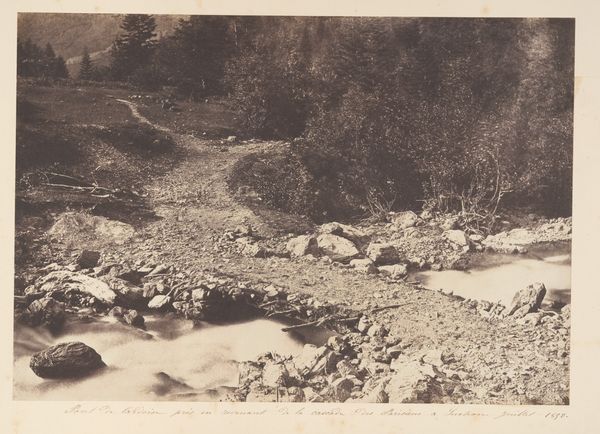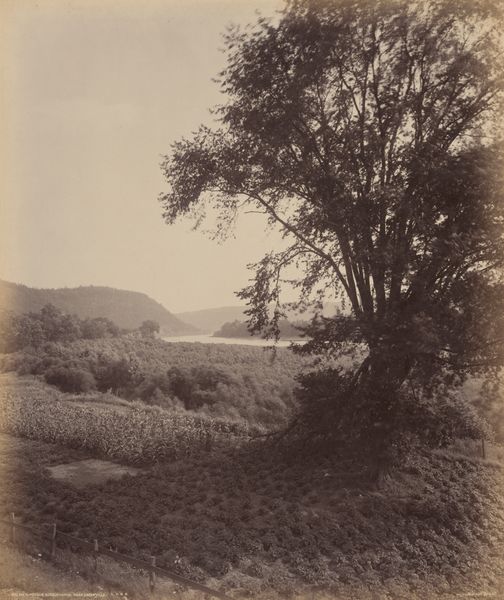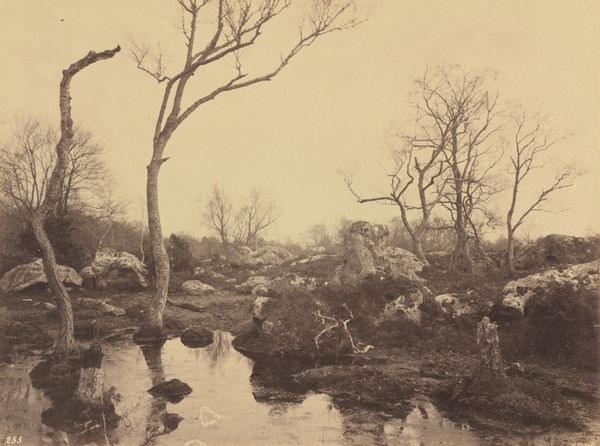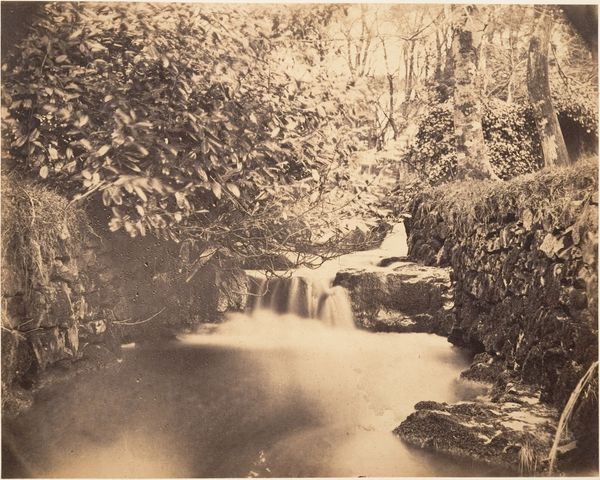
albumen-print, photography, albumen-print
#
albumen-print
#
landscape
#
photography
#
orientalism
#
albumen-print
#
realism
Dimensions: 8 3/4 x 10 15/16 in. (22.23 x 27.78 cm) (image)11 x 14 in. (27.94 x 35.56 cm) (mount)
Copyright: Public Domain
Editor: So, here we have "La fontaine d'Elisee," a photograph, likely an albumen print, taken by Félix Bonfils in the 1870s. It's remarkably serene, almost timeless, but there's this slightly melancholic feel about it. What do you see in this piece? How should we be reading it? Curator: It’s tempting to simply appreciate its aesthetic value. However, context is vital here. Bonfils, like many photographers of his time, catered to European fascination with the "Orient." How do you think images like this participated in shaping perceptions of the Middle East in the West? Editor: It’s interesting that you point that out. It feels very picturesque. So is that picturesque quality something specifically constructed for Western consumption? Curator: Exactly! The seemingly objective "realism" of photography can be deceptive. This image reinforces orientalist tropes— the seemingly untouched landscape, the romantic idea of a solitary figure interacting with nature. It feeds into a narrative of the region as exotic, timeless, and needing of Western attention, often justification for colonial endeavors. Editor: So the subject matter, that person near the fountain, for example, plays a part in this constructed narrative. What's the effect there? Curator: Yes, the figure is an important inclusion. They often are meant to suggest the “local” inhabitants as part of an ancient tableau or landscape, rather than as part of the quickly modernizing world. How might that resonate with viewers in Europe? Editor: It all feels more complicated now, seeing the cultural and political implications intertwined with a seemingly simple image. Curator: Indeed. Art is rarely created in a vacuum. Analyzing its historical context reveals power dynamics that shape how we see and understand the world. Editor: I see that so clearly now! I definitely have a broader perspective on this photo. Curator: Excellent, considering images from a historical and cultural perspective helps to uncover power dynamics and social constructions that might otherwise be invisible.
Comments
No comments
Be the first to comment and join the conversation on the ultimate creative platform.
